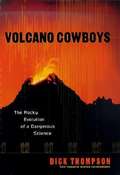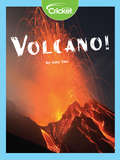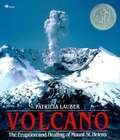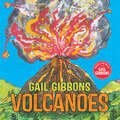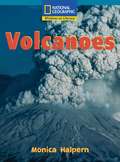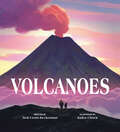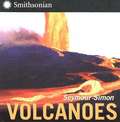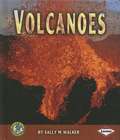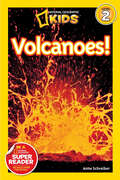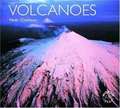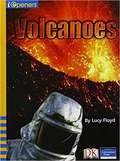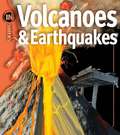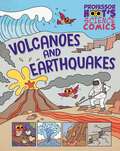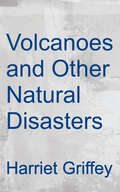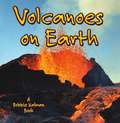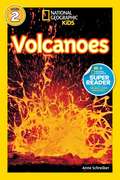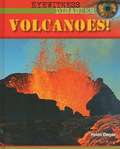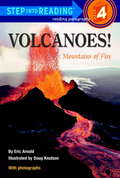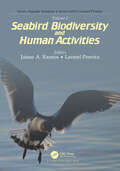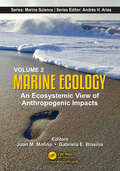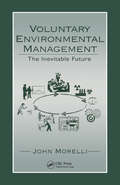- Table View
- List View
Volcano Cowboys: The Rocky Evolution of a Dangerous Science
by Dick ThompsonTwenty years ago, Mt. St. Helens, in Washington State, "blew. " It was the volcano's first eruption in recorded time, although as early as 1978 a team of scientists from the US Geological Survey had labeled it "the most dangerous volcano in the Cascade Range. " In June 1991, Mt. Pinatubo in the Philippines spewed forth its own mix of ash, gases, mud, lava, and all the other debris that had been building within the mountain for centuries. Between those two events, USGS scientists had been working at warp speed to learn more about predicting violent eruptions. Data from the nation's only Volcano Center was not helpful. Work there centered on volcanoes that responded to interior pressure by quietly releasing a slow-moving flow of lava, rather than spewing its entrails out in a blast. Survey members were presented with a rare opportunity when Mt. St. Helens showed signs of activity. Camped on the mountains flanks, daring the crater itself, they dug out rocks, tended recorders, began to learn how to use newly developed instruments. Here was an active volcano, believed to be on the verge of eruption by some, if not all, experts. Along with new instruments they had computer programs that saved them days and weeks of work. They learned techniques that revealed the dates of previous major eruptions and provided patterns for future predictions. After the eruption, studying Mt. St. Helens and other volcanoes, they learned more and more. By the time a newly-active Pinatubo threatened tens of thousands of villagers and the U. S. military's Clark Air Force Base, the men of the USGS were far better able to feel secure in urging local authorities and the Air Force brass to evacuate. It was still a gamble, but the odds were far better. And the work goes on. Thompson, a veteran science reporter for Time Magazine, spent many hours with the relative handful of scientists whom he calls "volcano cowboys. " (Considering their lifestyle and their rugged "laboratories" - the volcanoes themselves - the sobriquet is earned. ) They have loaned him their field notes, and one geologist gave him his as yet unpublished autobiography. The vivid material and Thompson's skill in bringing a good story to life has resulted in a book that celebrates these "cowboys" their tough and hazardous lives and the often harrowing decisions they must make.
Volcano!
by Amy TaoWhen volcanoes blow their top, watch out! They can blast out dangerous lava, rocks, ash, and steam that can contain clouds of poisonous gas. But when lava cools, it becomes rock, which in turn creates new land.
Volcano: The Eruption and Healing of Mount St. Helens
by Patricia Lauber<b>May 18, 1980, 8:32 A. M. :</b> An earthquake suddenly triggered an avalanche on Mount St. Helens, a volcano in southern Washington State. Minutes later, Mount St. Helens blew the top off its peak and exploded into the most devastating volcanic eruption in U. S. history. <P>What caused the eruption? What was left when it ended? What did scientists learn in its aftermath? In this extraordinary photographic essay, Patricia Lauber details the Mount St. Helens eruption and the years following. Through this clear accurate account, readers of all ages will share the awe of the scientists who witnessed both the power of the volcano and the resiliency of life.<P><P> <b>Newbery Medal Honor book</b>
Volcanoes
by Elaine LandauWhat makes the earth quake, rivers flood, and volcanoes blow their tops? How do natural forces become natural disasters? Buckle your seatbelts and get ready for a bumpy ride to the center of the earth for a look at some of the wildest phenomena in the history of earth science!
Volcanoes
by Gail GibbonsRumbling, hissing, shaking. . .a volcano is about to erupt! Learn all about volcanoes, from tectonic plates to what do when there is a volcanic warning, in this primer for young readers. Did you know there are four main types of volcanoes? Or that volcanoes are classified as active, dormant, or extinct? The Devil&’s Tower in Wyoming is an extinct volcano. It&’s about 40.5 million years old!Gail Gibbons explores the hows and whys of volcanoes, using direct sentences, maps, infographics, and illustrations. Readers will learn about the four layers of the earth, the basics of plate tectonics, the different types of volcanoes, and much more. Fully vetted by a working volcanologist, this book is perfect for earth science lovers and aspiring volcanologists. This title is part of the Explore the World . . . with Gail Gibbons series, which promotes active learning, good citizenship, and student leadership.
Volcanoes
by National Geographic LearningThis book shows where and how volcanoes form and what happens when they erupt.
Volcanoes
by Nell Cross BeckermanThe team behind the acclaimed book Caves returns with an enticing exploration of one of the most explosive wonders on the planet--Volcanoes!A rumble. A tremble. A grumble. Growing, growling, getting hot. When will it...POP?!Using evocative storytelling, Nell Cross Beckerman leads children on an adventure through the radioactive wonders that are volcanoes. From deep down on the ocean floor to extraterrestrial volcanoes, Beckerman guides readers with dramatic, poetic language. Nonfiction text on every page allows for deeper understanding of the topic.Illustrator Kalen Chock's stunning illustrations have been praised as "atmospheric" and "striking," and readers will be delighted as each new page brings a new surprise. Extensive backmatter includes an author's note, additional information on the types of volcanic eruptions and the questions volcanologists are trying to answer, and additional facts. An ideal choice for nature lovers, future explorers, and fans of Jason Chin and Kate Messner.
Volcanoes
by Seymour Simon<P>Exceptional nonfiction for children from two of the most trusted names in science education: Seymour Simon and the Smithsonian Institution. <P>[This text is listed as an example that meets Common Core Standards in English language arts in grades 4-5 at http://www.corestandards.org.]
Volcanoes (Early Bird Earth Science)
by Sally M. WalkerThis book introduces young readers to volcanoes--what they are, how they form, and how they affect people.
Volcanoes (Readers)
by Anne SchreiberThe cool story of volcanoes will intrigue kids and adults alike. Hot melted rock from the middle of our planet forces its way up through cracks in the Earth&’s crusts, exploding violently and sometimes unexpectedly in volcanic fury that can terrorize populations for months, even years. Anne Schreiber&’s narrative gives readers a little of the science, a little of the history, and a lot of the action. National Geographic photography fires the imagination on dramatic spreads alive with vivid images of lava, ash, molten rock, weird rocks, and steaming seawater.
Volcanoes (Worldlife Library)
by Peter ClarksonWhat are volcanoes? Where and why do they happen? The aim of this book is to answer these questions and to explain one of the great natural wonders of the Earth. Volcano! Just the mention of the word creates a mental picture, which varies with the listener's own perception. An artist may think of the classical shape of Mount Fuji; a historian may recall the destruction of Pompeii by Vesuvius; a geologist may speculate about the gas content of the lava in relation to its viscosity; a newspaper editor may see the scope for spectacular photographs and stories of human suffering and heroism that will boost newspaper circulation. Whatever thoughts spring to mind, nobody can be but impressed by the awful power of a volcanic eruption and the devastation that may be caused.
Volcanoes And Earthquakes (INsiders)
by Ken RubinINsiders brings volcanoes & earthquakes to life, with the most up-to-date information stimulating minds and imaginations in a whole new way.
Volcanoes and Earthquakes
by Mary EltingDiscusses how earthquakes and volcanic eruptions occur and how they can be predicted.
Volcanoes and Earthquakes (Professor Hoot's Science Comics #4)
by Jen GreenEvery day brings a new adventure for Professor Hoot - and a new learning experience. There's a plume of smoke in the distance, it looks like a volcano has erupted! Professor Hoot sets off to investigate all about volcanoes and how they are formed, all while avoiding smoky feathers! Discover other natural distasters, such as earthquakes, tsunamis and landslides - and what to do in such events.An entertaining comic strip approach to KS1 science topics, Professor Hoot's Science Comics are accessible and full of fun. Each book is an adventure and a chance for readers to learn something new, before testing their knowledge at the end of each book in Professor Hoot's quiz. Collect each adventure: Big Machines; Dangerous Animals; Dinosaurs; Robots and AI; Space; Volcanoes and Earthquakes.
Volcanoes and Other Natural Disasters (Dk Readers Series Dorling Kindersley Readers)
by Dorling Kindersley Publishing Staff Harriet GriffeyDescribes natural disasters which have occurred in various places throughout the world including the eruption of Vesuvius in 79 A.D., the Yellow River flood in 1887, and the Australian bush fires in 1983.
Volcanoes on Earth
by Bobbie KalmanDramatic photographs of spewing and flowing lava will capture the attention of any child. in this fantastic new book, children will be excited to learn what a volcano is and what makes it erupt. Simple explanations describe the different kinds of volcanoes, including cinder, cone-shaped, shield, and composite as well as the different kinds of lava and the land formations they create on land and under the ocean. Other topics include the reason volcanoes often erupt during earthquakes, why giant tsunami waves are sometimes created by underwater earthquakes, and how volcanoes are studied in order to predict and prepare for eruptions. Children will also enjoy making their own volcano out of household materials.
Volcanoes!
by Anne SchreiberThe cool story of volcanoes will intrigue kids and adults alike. Hot melted rock from the middle of our planet forces its way up through cracks in the Earth’s crusts, exploding violently and sometimes unexpectedly in volcanic fury that can terrorize populations for months, even years. Anne Schreiber’s narrative gives readers a little of the science, a little of the history, and a lot of the action.
Volcanoes!
by Helen DwyerProduces the facts on volcanoes, like what is a volcano, where they are found, and basic information on the same
Volcanoes!: Mountains of Fire (Step into Reading)
by Eric ArnoldA volcano could be called a sleeping mountain--that is, until it wakes up! What is it like to witness the eruption of one of nature's majestic time bombs? Young readers can learn what makes volcanoes "tick," and read about some of the most famous eruptions in history.
Volcanoes: Let's-Read-and-Find-Out Science
by Franklyn M. BranleyThis is a Stage 1 Let's-Read-and-Find-Out, which means the book explains simple science concepts for preschoolers and kindergarteners.
Volume 1: Seabird Biodiversity and Human Activities (Aquatic Sciences)
by Jaime A. RamosSeabirds are global travellers connecting oceans and seas all over the world, and facing multiple threats at local and global scales. Seabirds are long-lived top predators, reflecting changes at lower trophic levels, and are good models to assess ecological changes produced by human societies. Thus, world-wide collaborations are needed to understand seabird ecology and to develop effective conservation measures benefitting both humans and seabird populations.This book provides a modern overview on seabird biodiversity studies: it begins by covering the most up-to-date techniques to study seabirds, and then focus on pragmatic issues related with interactions between seabirds and humans, the use of seabirds as ecological indicators and conservation of seabirds. It gives an updated insight on all these topics and highlights gaps that need further development for a comprehensive understanding of the relationships between seabirds and human actions.This book covers the response of the seabird research community to a biodiversity crisis aiming to contribute towards environmental sustainability. It should provide inspiration to a wide range of professionals and students, including the much needed world-wide collaboration between research groups and practitioners. In this way seabird research and conservation provide an inspiration for the solution of global issues such as climate change.
Volume 2: An Ecosystemic View of Anthropogenic Impacts (Marine Science Series)
by Juan M. Molina Gabriela E. BlasinaMarine systems face a multitude of anthropogenic stressors such as climate change, recreational and commercial fishing, aquaculture practices, pollution, and coastal urbanization. These stressors exert escalating pressure on marine ecosystems, leading to noticeable changes in habitat conditions as well as alterations in the abundance and diversity of their communities. Understanding the impacts of these stressors proves challenging due to their interactions with various factors, such as species richness, environmental fluctuations, system openness, stressor tolerance, and the occurrence rate and intensity of each stressor. Therefore, a comprehensive analysis of the entire ecosystem is crucial. It is essential to consider the unique characteristics of each marine environment when assessing the cumulative stress that affects them. This book provides insights into the functioning of marine ecosystems and their responses to both natural and human-induced drivers within the framework of sustainable marine resource utilization. This book will make a valuable contribution to the scientific community, serving as a resource to inform decision-makers and the general public about the current state of knowledge regarding the marine environment and the human footprints on our seas.
Volume 5: Maritime Communities and Vegetation of Open Habitats
by J. S. RodwellBritish Plant Communities is the first systematic and comprehensive account of the vegetation types of this country. It covers all natural, semi-natural and major artificial habitats in Great Britain (but not Northern Ireland), representing the fruits of fifteen years of research by leading plant ecologists. The book breaks new ground in wedding the rigorous interest in the classification of plant communities that has characterized Continental phytosociology with the deep concern traditional in Great Britain to understand how vegetation works. The published volumes have been greeted with universal acclaim, and the series has become firmly established as a framework for a wide variety of teaching, research and management activities in ecology, conservation and land-use planning.
Voluntary Environmental Management: The Inevitable Future
by John MorelliA shift from government oversight to private sector self-regulation appears to be the future of environmental management. This will be a complex and complicated transition, as individual companies attempt to balance their needs against that of the surrounding communities - and world.Voluntary Environmental Management: The Inevitable Future explores how business and industry are preparing for this dramatic shift in responsibility and accountability.John Morelli pinpoints companies that have already adopted environmental auditing and management tools; examines the deficiencies of government-imposed environmental regulations; and shows how businesses can become more proactive in monitoring and managing their environmentally affective activities.The role of global marketplace forces receives substantial emphasis in Voluntary Environmental Management: The Inevitable Future, especially in light of the widespread international acceptance of new ISO 14000 standards.
